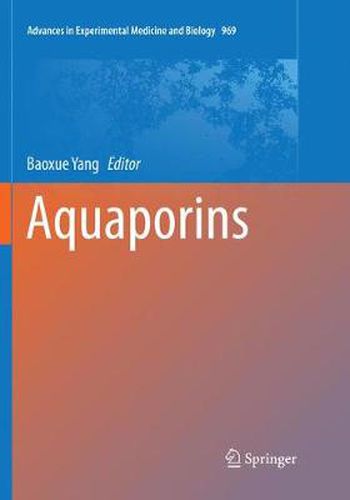Readings Newsletter
Become a Readings Member to make your shopping experience even easier.
Sign in or sign up for free!
You’re not far away from qualifying for FREE standard shipping within Australia
You’ve qualified for FREE standard shipping within Australia
The cart is loading…






This book provides a state-of-the-art report on our current understanding of aquaporins and the future direction of the field. Aquaporins (AQPs) are a group of water-channel proteins that are specifically permeable to water and other small molecules, such as glycerol and urea. To date thirteen water-channel proteins (AQP0 - AQP12) have been cloned and the mechanisms and physiological functions of water transport across biological membranes have long been the subject of interest. Recent advances in the molecular biology and physiology of water transport have yielded new insights into how and why water moves across cell membranes, and studies on aquaporin knockout mouse models suggest that aquaporins are involved in the development of some diseases and they may be useful targets of research into selective-inhibitor drugs. By focusing on the advances made over the last 20 years in the biophysics, genetics, protein structure, molecular biology, physiology, pathophysiology and pharmacology of aquaporins in mammalian cell membranes, this book provides novel insights into further mechanisms and the physiological significance of water and some small molecule transport in mammals in order to stimulate further research in new directions.
$9.00 standard shipping within Australia
FREE standard shipping within Australia for orders over $100.00
Express & International shipping calculated at checkout
This book provides a state-of-the-art report on our current understanding of aquaporins and the future direction of the field. Aquaporins (AQPs) are a group of water-channel proteins that are specifically permeable to water and other small molecules, such as glycerol and urea. To date thirteen water-channel proteins (AQP0 - AQP12) have been cloned and the mechanisms and physiological functions of water transport across biological membranes have long been the subject of interest. Recent advances in the molecular biology and physiology of water transport have yielded new insights into how and why water moves across cell membranes, and studies on aquaporin knockout mouse models suggest that aquaporins are involved in the development of some diseases and they may be useful targets of research into selective-inhibitor drugs. By focusing on the advances made over the last 20 years in the biophysics, genetics, protein structure, molecular biology, physiology, pathophysiology and pharmacology of aquaporins in mammalian cell membranes, this book provides novel insights into further mechanisms and the physiological significance of water and some small molecule transport in mammals in order to stimulate further research in new directions.